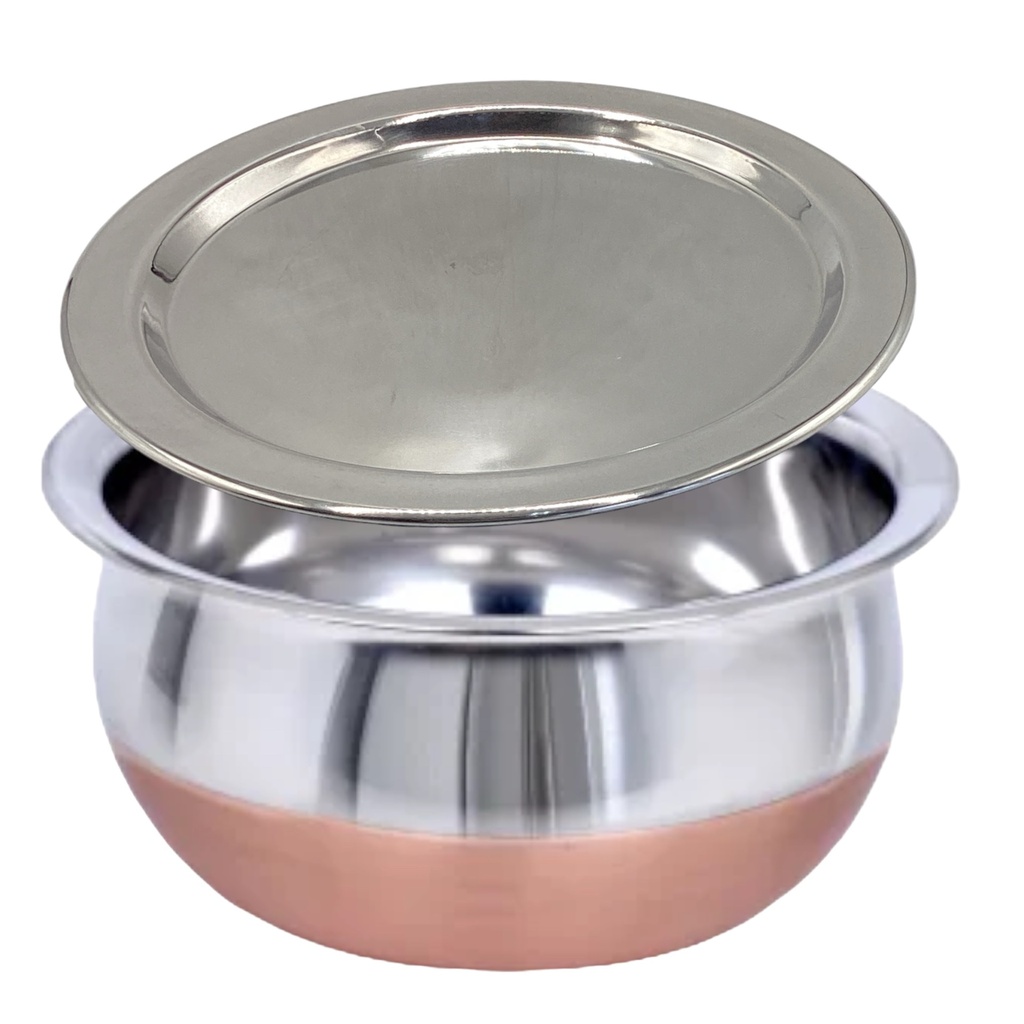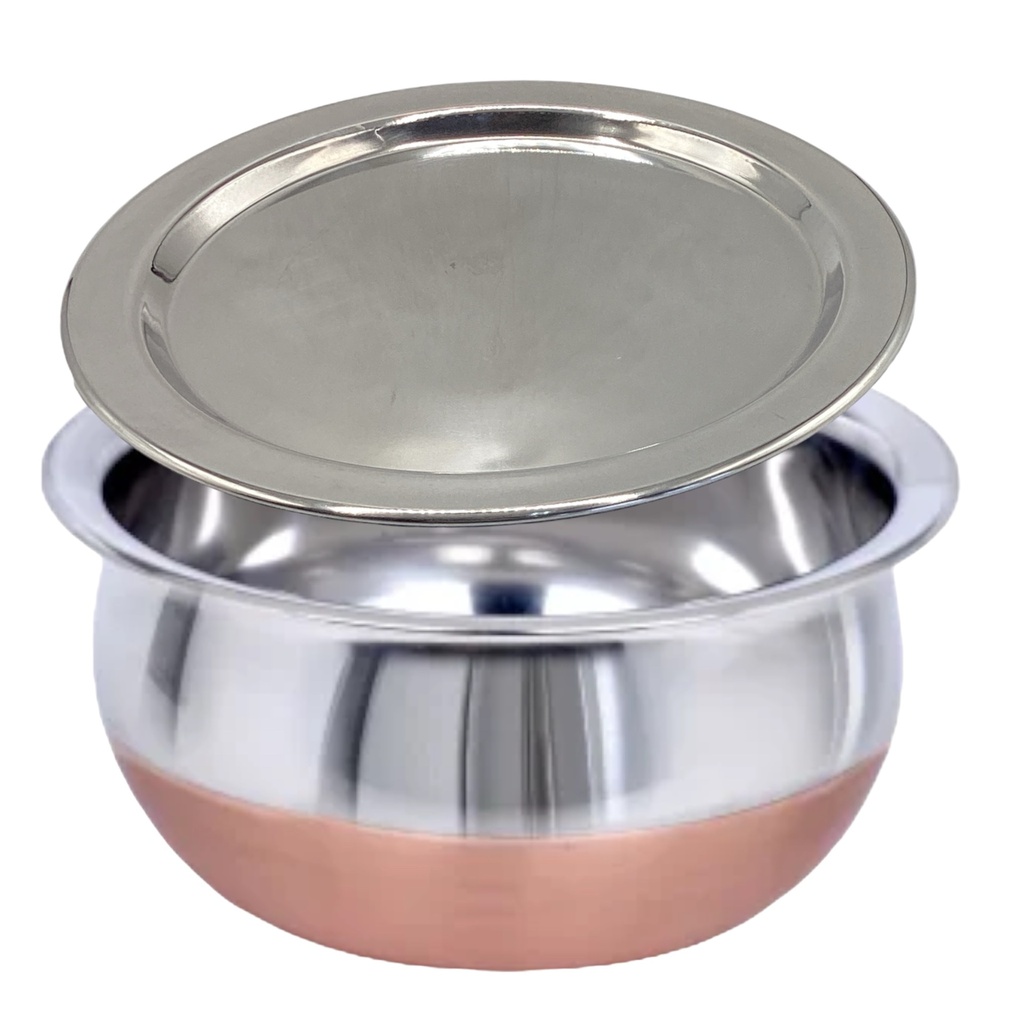Pot 105Mm Copper Bottom Idp613
Pot 105Mm Copper Bottom Idp
It seems like you're referring to a 105mm Pot with a Copper Bottom from IDP (which could be a brand or manufacturer). Let’s break this down into its components for better understanding:
Specifications of a 105mm Pot with Copper Bottom (IDP)
1. Pot Size: 105mm
- The 105mm likely refers to the diameter of the pot. This is a small-to-medium size, suitable for individual or small-scale cooking.
- 105mm (10.5 cm) is around 4 inches, so it’s a small-sized pot, ideal for preparing dishes for one or two people.
- Such pots are often used for making sauces, soups, boiling small amounts of vegetables, or preparing single portions of food.
2. Copper Bottom:
- Copper Base: The pot has a copper bottom, which is often included in cookware for the following reasons:
- Excellent Heat Conductivity: Copper is a great conductor of heat, meaning the pot heats up quickly and distributes heat evenly across the cooking surface. This allows for more precise temperature control while cooking.
- Rapid Heating & Cooling: Copper pots heat up faster than those with other materials and also cool down quickly when removed from heat. This feature makes copper-bottomed pots ideal for cooking delicate dishes that require temperature adjustments.
- Enhanced Cooking Efficiency: The copper bottom will provide more efficient energy use, reducing cooking times and saving on energy costs.
3. IDP (Brand/Manufacturer):
- IDP might refer to a cookware brand, a specific line of products, or a company specializing in manufacturing kitchen equipment. Many companies design and produce high-quality kitchenware, with copper-bottomed pots being a common product in their lineup.
Uses of a 105mm Pot with Copper Bottom (IDP):
This size and construction make it ideal for various uses:
- Small-Scale Cooking: Perfect for single servings or small batches, such as preparing sauces, gravies, or small portions of stews.
- Sauce and Soup Preparation: Its small size and even heat distribution make it great for simmering sauces or soups, where you need precise temperature control.
- Boiling Eggs: Ideal for boiling eggs in smaller quantities.
- Reheating Food: Due to its fast heat-up time, it’s excellent for reheating small portions of food evenly.
- Melting Butter or Chocolate: Small pots like this are ideal for tasks that require gradual heating, such as melting butter or chocolate without scorching it.
Advantages of a Copper-Bottomed Pot:
Superior Heat Distribution: Copper’s excellent conductivity ensures even heat distribution, reducing the likelihood of hot spots, which is important for dishes that require delicate control over temperature.
Precision Cooking: The fast heat response of copper pots means that chefs can adjust the heat more accurately and control cooking temperatures with greater ease.
Energy Efficiency: Copper heats up quickly, reducing cooking time and saving on energy, making it more efficient than other materials, such as aluminum or cast iron.
Aesthetic Appeal: Copper-bottomed cookware is often visually appealing and has a timeless, classic look. Copper also tends to develop a unique patina over time, adding character to the pot.
Durability and Strength: Copper is a sturdy material, and when combined with stainless steel or other high-quality materials in the pot's body, it can be highly durable, resistant to corrosion, and capable of lasting for many years.
Non-Reactive Surface (if lined with stainless steel): Most high-quality copper-bottomed pots have an interior lining of stainless steel or other materials, preventing the copper from reacting with food, which could alter flavors.
Disadvantages of Copper Pots (Potential Concerns):
Maintenance: Copper requires regular polishing to maintain its shiny appearance. Over time, it can tarnish or develop a patina, which some people may not like. However, this does not affect performance.
Cost: Copper cookware is generally more expensive than pots made with aluminum or non-copper bases due to the material's higher cost.
Weight: Copper-bottomed pots can be heavier than other materials, which might make them a little harder to handle when full.
Care for Copper: The copper bottom requires more care, as it can tarnish and need occasional cleaning with a copper cleaner or a mixture of vinegar and salt to restore its shine.
Care and Maintenance Tips for Copper Bottom Pots:
- Clean After Each Use: Always wash the pot with warm, soapy water after use and dry it thoroughly to avoid water spots.
- Polish Copper: Copper may tarnish over time, so you should occasionally polish the copper bottom with a copper cleaner to maintain its shine.
- Avoid Abrasive Cleaners: Use soft sponges or cloths to avoid scratching the copper surface.
- Store Properly: Store your copper pot in a dry place to avoid corrosion or tarnishing.
- Check for Lining Integrity: If the pot is lined with another metal, like stainless steel, make sure the lining stays intact and doesn’t peel away, which could expose the copper to food.
Summary:
The 105mm Copper Bottom Pot (IDP) is ideal for small-scale, precise cooking. The copper base enhances its heat conductivity, allowing quick, even cooking, making it perfect for preparing sauces, soups, or small portions. While the pot offers excellent cooking efficiency and aesthetic appeal, it requires some care, particularly in maintaining the copper's shine. However, for those who appreciate high-quality cookware, a copper-bottomed pot can be a valuable addition to any kitchen.



